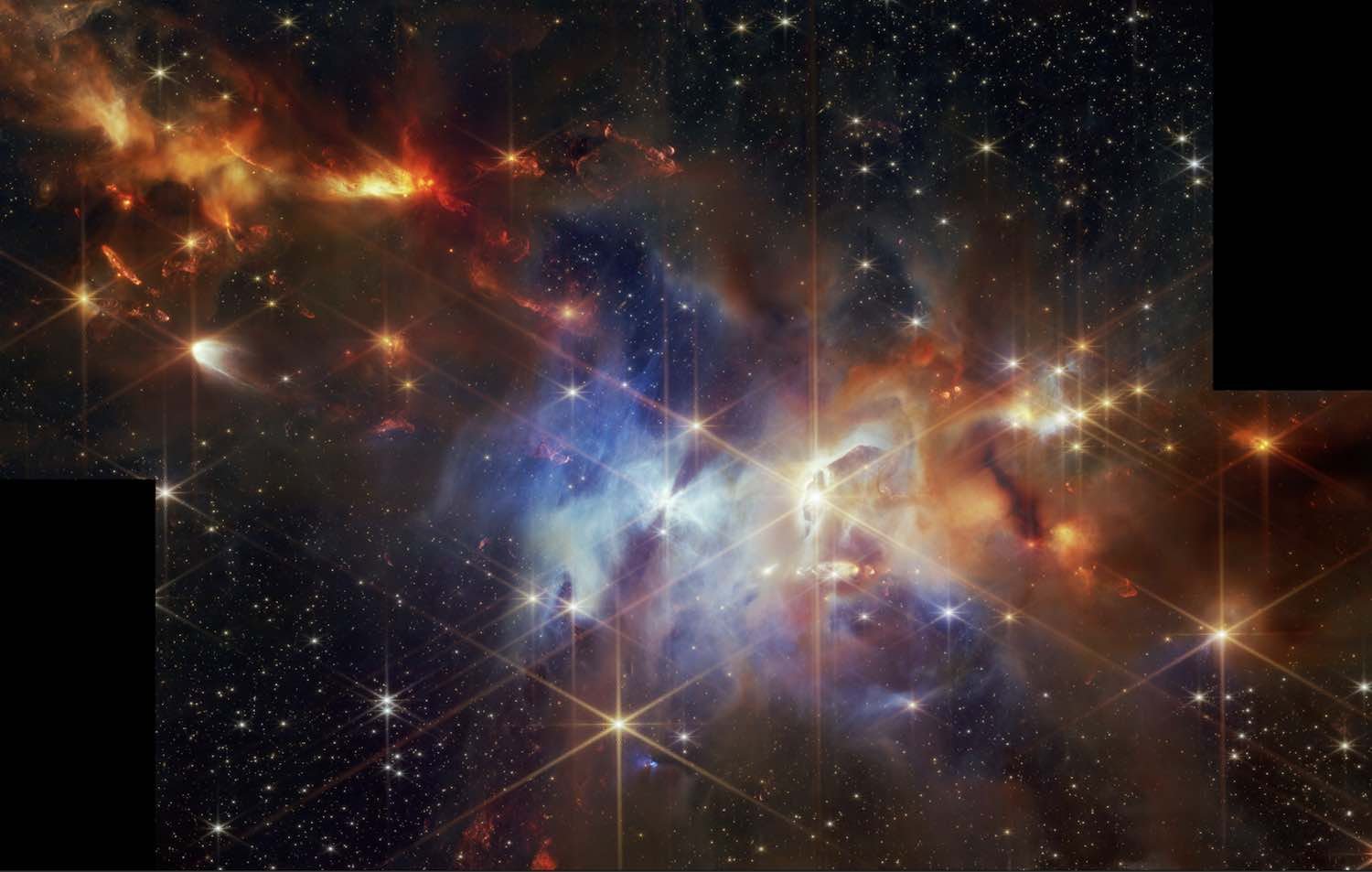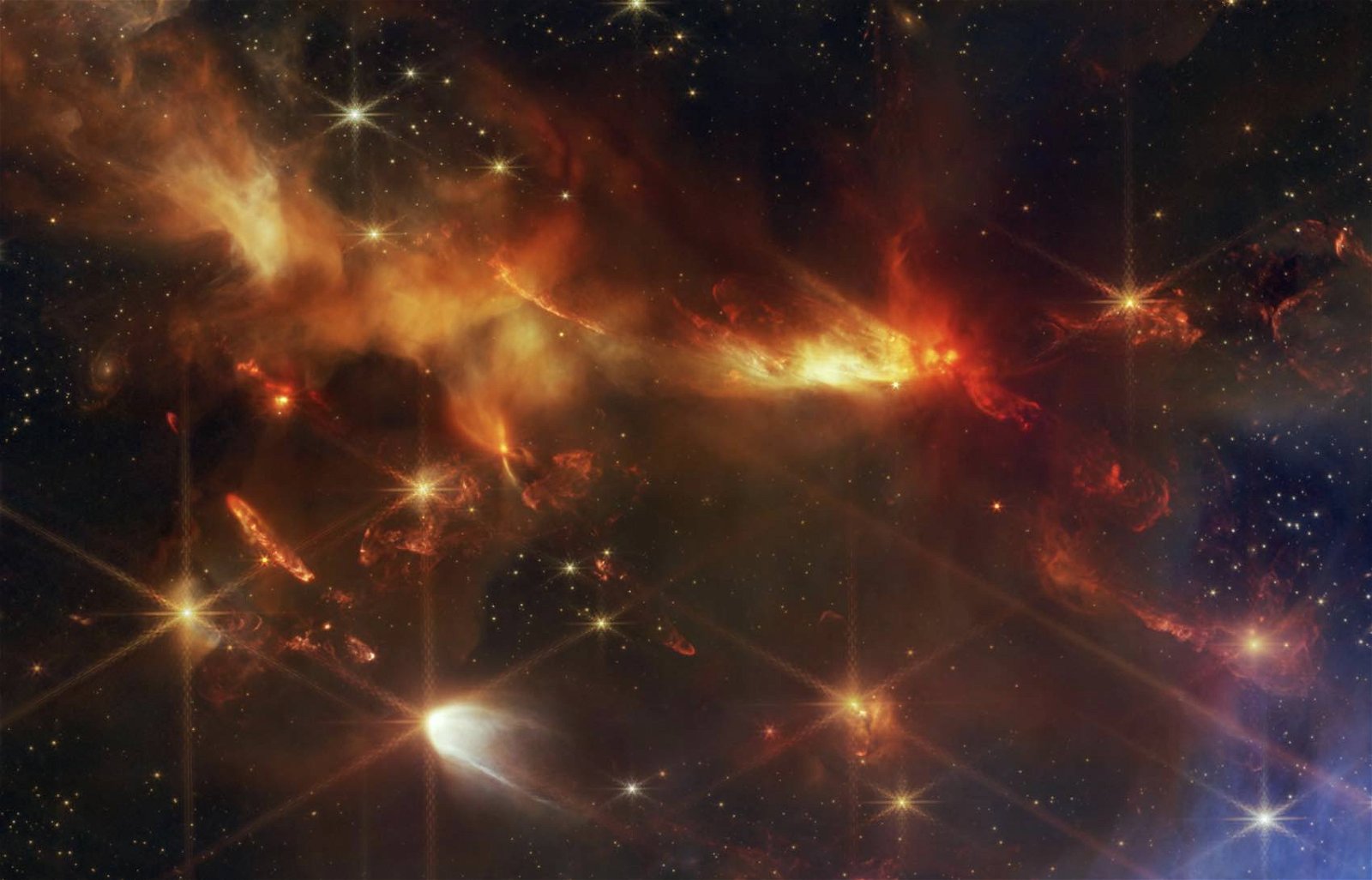NASA’s James Webb Space Telescope has captured striking new images of the Serpens Nebula that reveal a rare alignment of stellar jets, offering new insights into the formation of stars.
Protostellar outflows occur when high-speed jets of hot gas produced by young stars collide with surrounding dust and gases. In the new Webb images, several outflows spotted in the northern area of the Serpens Nebula appear to all be aligned and oriented in the same direction.
Located around 1,300 light-years from Earth, the Serpens Nebula is a dense cluster of young stars, some of which are only about 100,000 years old. This region is also home to discoveries that include the “Bat Shadow,” observed in 2020 data from Webb’s predecessor, the Hubble Space Telescope.
According to Klaus Pontoppidan, principal investigator at NASA’s Jet Propulsion Laboratory, the alignment of these outflows in the new images obtained with Webb’s Near-Infrared Camera (NIRCam) is a phenomenon that astronomers have anticipated for years.
“Astronomers have long assumed that as clouds collapse to form stars, the stars will tend to spin in the same direction,” Pontoppidan said in a statement.
“However, this has not been seen so directly before. These aligned, elongated structures are a historical record of the fundamental way that stars are born.”


Interstellar gas clouds begin to spin rapidly as they collapse and begin to form into stars. When this occurs, the only way for gases to continue moving inward is to remove some of their spin. This process gives rise to the disk of material that forms around young stars, in which magnetic fields located in the inner region of the disk project some of the stellar material outward in opposite directions.
These jets can be seen in the new Webb images, appearing as bright streaks with reddish coloration (indicating molecular hydrogen and carbon monoxide) caused by shockwaves produced as the jets strike the surrounding gases and dust.
“This area of the Serpens Nebula – Serpens North – only comes into clear view with Webb,” said Joel Green, lead author from the Space Telescope Science Institute. “We’re now able to catch these extremely young stars and their outflows, some of which previously appeared as just blobs or were completely invisible in optical wavelengths because of the thick dust surrounding them.”
There may be more than one mechanism behind what can potentially shift the direction of stellar outflows during the early stages of a star’s life. Binary stars are one possibility that can shape the direction of outflows as they spin around one another.
Future research will involve the use of Webb’s Near-Infrared Spectrograph (NIRSpec) to study the chemical composition of the cloud, allowing astronomers to analyze the volatile compounds present within them. Such information, when compared with current data obtained in studies involving protoplanetary disks, could provide key insights into the origins of these compounds.
Pontoppidian says that studying these volatiles is significant because all life on Earth originates from matter that stems from such compounds.
“The majority of water here on Earth originated when the Sun was an infant protostar billions of years ago,” Pontoppidian says. “Looking at the abundance of these critical compounds in protostars just before their protoplanetary disks have formed could help us understand how unique the circumstances were when our own solar system formed.”
The initial results of this study have been accepted for publication in the Astrophysical Journal.
Micah Hanks is the Editor-in-Chief and Co-Founder of The Debrief. He can be reached by email at micah@thedebrief.org. Follow his work at micahhanks.com and on X: @MicahHanks.

